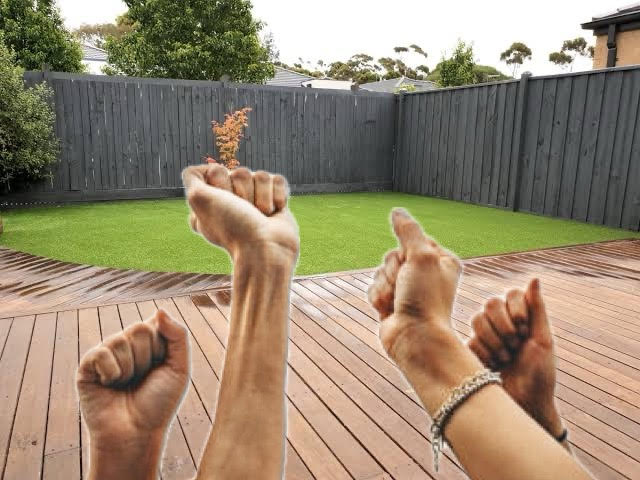In the midst of Melbourne’s burgeoning housing crisis, the quest for solutions has taken on an urgent tone. Conversations in community forums, council meetings, and social media platforms echo a common concern: the dire need for more housing and a greater diversity of housing options. Yet, many participants in these discussions may not realize that the solution could literally lie in their own backyards.
Signs You Might Be Overlooking a Prime Opportunity
1. Ample Unused Land: If your property includes a sizable backyard or unused land that’s merely serving as extra lawn space, it could potentially be developed into one or more additional housing units.
2. Location in High-Demand Areas: Properties located in areas with high demand for housing, especially near city centers, public transportation, and amenities, are prime candidates for subdivision. The closer you are to these hubs, the higher the potential impact of adding more housing.
3. Zoning Laws on Your Side: Not every homeowner realizes the development potential dictated by local zoning laws. If your property is in a zone that allows for subdivision or multi-dwelling units, you’re in a unique position to contribute to easing housing shortages.
4. Financial Flexibility: If you’ve been contemplating ways to increase your property’s value or generate additional income, subdivision can offer a viable path forward, aligning personal financial goals with broader community needs.
5. Neighbourhood Transformations: Observing new developments, renovations, and an influx of new residents in your area can signal a ripe opportunity for subdivision. These changes often reflect a growing demand for housing that your property could help satisfy.
6. Community Feedback: Participation in community discussions might reveal specific needs or desires for more housing options. Paying attention to these conversations can illuminate how your property could address these gaps.
Embracing the Opportunity
Recognizing you hold the keys to a potential housing solution is just the first step. The path from realization to action involves careful planning, community engagement, and a commitment to contributing positively to Melbourne’s housing landscape. By considering the possibility of subdivision, you’re not just maximizing your property’s value; you’re actively participating in a collective effort to enhance the livability and accessibility of one of Australia’s most vibrant cities.
For those who see themselves in these signs, the opportunity to make a difference is both a personal and communal call to action. The road to addressing Melbourne’s housing challenges may well begin in your own backyard, transforming underutilized space into homes that meet the community’s growing needs.
The Untapped Potential of Backyard Subdivision
Backyard subdivision – the process of dividing a single residential property into two or more lots – presents a unique opportunity to address housing shortages from the ground up. For property owners in Melbourne, this isn’t just about capitalizing on the value of their land; it’s about contributing to a broader solution that benefits the entire community.
Why Consider Backyard Subdivision?
- Alleviating Housing Shortages: By creating new dwelling opportunities in established neighbourhoods, backyard subdivisions can directly address the scarcity of available housing.
- Diverse Housing Options: This approach allows for the creation of smaller, potentially more affordable units that can serve different demographics, from young professionals and small families to elderly residents seeking to downsize.
- Community Benefits: Besides increasing housing supply, backyard subdivisions can rejuvenate neighbourhoods, bringing in new residents and energy without the need for extensive new infrastructure.
The Process Simplified
- Research and Planning: Understanding local council regulations is the first step. Melbourne’s zoning laws vary, and what’s permissible in one suburb might not be allowed in another. A feasibility study can help determine the potential for subdivision on your property.
- Professional Consultation: Engage with urban planners, architects, and legal advisors to navigate the subdivision process. Their expertise will be invaluable in designing a project that meets legal requirements and community needs.
- Community Engagement: Open lines of communication with neighbours and local community groups early in the process. Their support can be crucial, and their input can provide valuable insights into the local housing needs.
- Approval and Development: With a solid plan and community backing, the next steps involve obtaining the necessary approvals from local authorities and moving forward with development. This stage can vary in length, depending on the complexity of the project.
Real-Life Success Stories
Across Melbourne, numerous success stories of homeowners have already transformed their backyards into vibrant living spaces that enhance the community. From granny flats to townhouses, these developments not only add value to the property but also contribute to solving the city’s housing puzzle.
A Call to Action
The conversation around Melbourne’s housing shortage often centers on what governments, developers, and large corporations can do. However, the power of individual property owners to influence this landscape should not be underestimated. If you’re engaged in discussions about housing needs in your community, it might be time to look closer to home for solutions. Your backyard could begin Melbourne’s next chapter in housing diversity and availability.
In embracing backyard subdivision, Melbourne’s residents have the opportunity to be at the forefront of a grassroots solution to one of the city’s most pressing challenges. It’s a chance to think globally and act locally, one backyard at a time.
